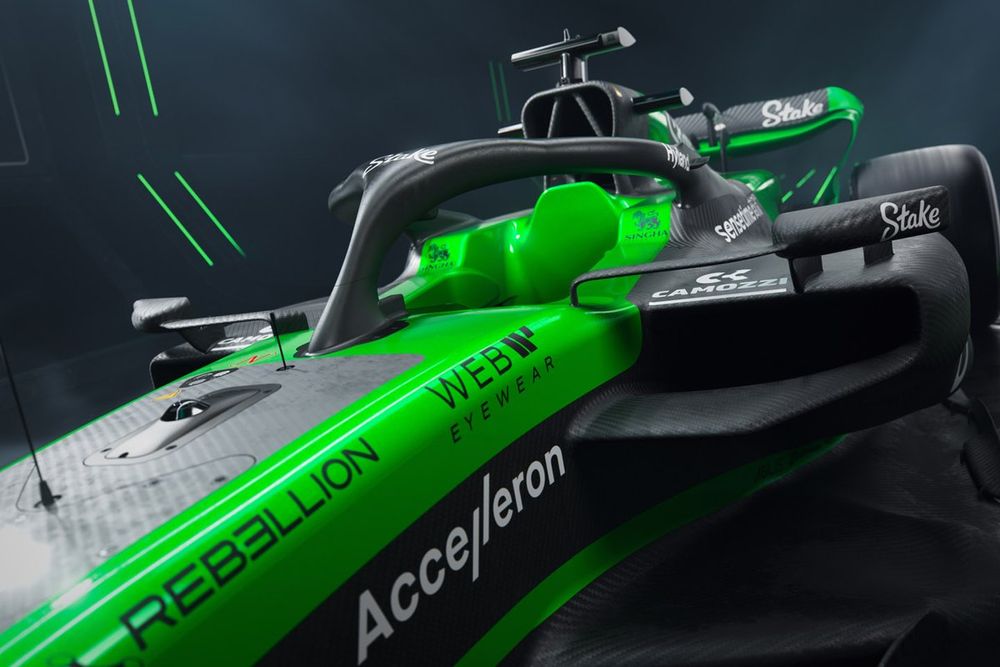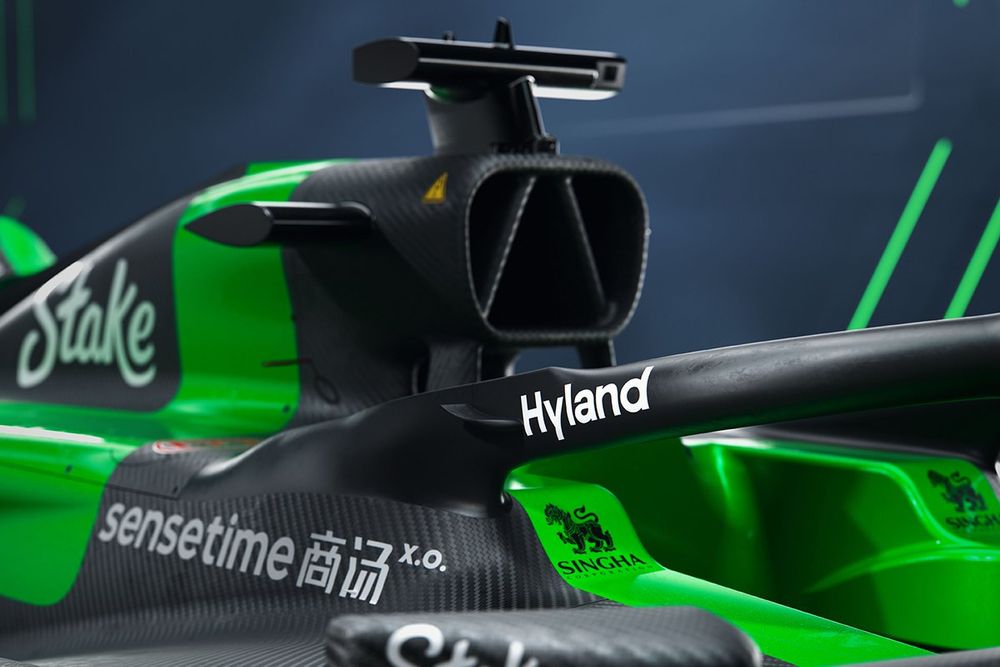Heading that list is a major change at the front of the car, as it sports a pull-rod suspension arrangement this year, rather than a push-rod system.
Both Red Bull and McLaren made that switch at the beginning of this regulation cycle two years ago, so it’s not groundbreaking in any way, but it does suggest there’s a tangible benefit for having the layout, given the upheaval required to make the change.
The repackaging of the inboard suspension elements will result in their weight being placed lower in chassis which makes life a little trickier in terms of making setup changes. But, as always, it’s the aerodynamic benefits that have likely tilted the balance in terms of making the shift.
Stake F1 C44 Roll Over & Airbox
Photo by: Sauber F1 Team
The biggest departure actually comes in the form of its roll hoop and airbox arrangement, as the team has overhauled the design completely when compared with its last eight machines.
Six of these cars featured a variant of the blade-style rollover hoop with the airbox segmented around its spine, whilst the C39 and C41 utilised a triangular roll hoop and a hood behind the main assembly.
The changes made to the regulations for 2024 have obviously contributed to this change and are the result of ongoing improvements made by the FIA to increase safety. These changes were made in light of the incident involving Zhou Guanyu at the British Grand Prix in 2022, where the roll hoop failed after his car was flipped over.

Sauber C44
Photo by: Sauber F1 Team
Sauber had already made the switch to a downwash ramp-style sidepod solution for 2023 but it has upped the ante for this season, not only optimising the shape of the bodywork but also incorporating a feature that will no doubt be seen up and down the pitlane this season and originated on the RB18, before being developed further.
In this case, it’s resulted in an elongated lip for the lower leading edge of the sidepod bodywork inlet that tapers to the shoulder section, which creates a wide but shallow inlet.
This also changes the profile of the undercut, with much more space afforded beneath the inlet that can be shaped to optimise the airflow’s trajectory and opens avenues in terms of development for both it and the floor alongside.
The upper surface of the sidepod has also been a focus of the team’s attention, with the shoulder extended along the entire flank, creating a subtle gully that will deliver the airflow to…
Click Here to Read the Full Original Article at Motorsport.com – Formula 1 – Stories…

